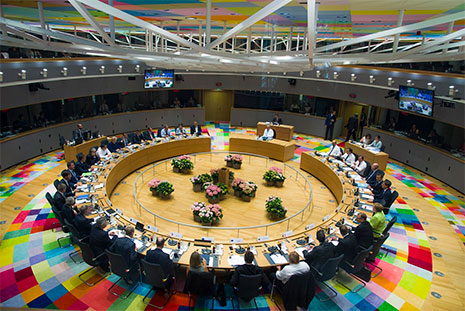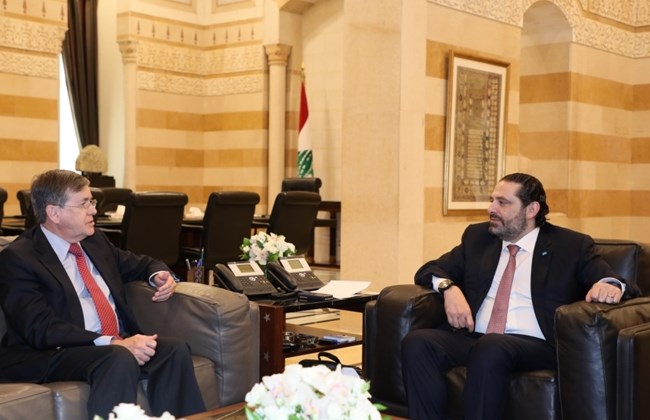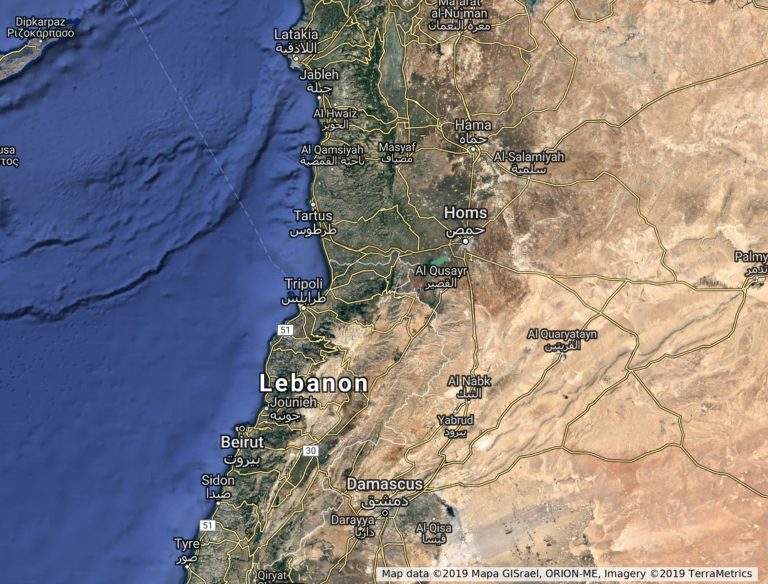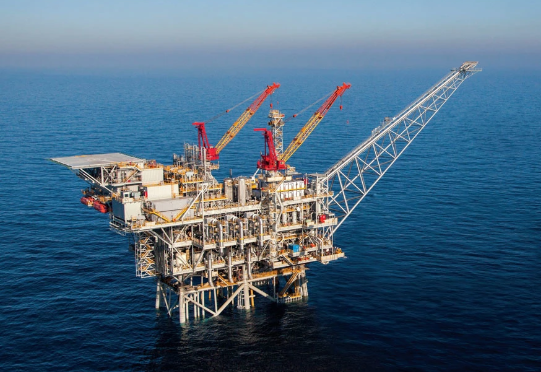European Council conclusions on the MFF, climate change, disinformation and hybrid threats, external relations, enlargement and the European Semester, 20 June 2019

II. Multiannual financial framework
2. The European Council welcomed the work done under the Romanian Presidency and took note of the various elements of the MFF package. It called on Finland’s Presidency to pursue the work and to develop the Negotiating Box. On that basis the European Council will hold an exchange of views in October 2019, aiming for an agreement before the end of the year.
III. Climate change
3. The European Council emphasises the importance of the United Nations Secretary General’s Climate Action Summit in September for stepping up global climate action so as to achieve the objective of the Paris Agreement, including by pursuing efforts to limit the temperature increase to 1.5°C above pre-industrial levels. It welcomes the active involvement of Member States and the Commission in the preparations.
4. Following the sectoral discussions held over recent months, the European Council invites the Council and the Commission to advance work on the conditions, the incentives and the enabling framework to be put in place so as to ensure a transition to a climate-neutral EU in line with the Paris Agreement [1] that will preserve European competitiveness, be just and socially balanced, take account of Member States’ national circumstances and respect their right to decide on their own energy mix, while building on the measures already agreed to achieve the 2030 reduction target. The European Council will finalise its guidance before the end of the year with a view to the adoption and submission of the EU’s long-term strategy to the UNFCCC in early 2020. In this context, the European Council invites the European Investment Bank to step up its activities in support of climate action.
5. The EU and its Member States remain committed to scaling up the mobilisation of international climate finance from a wide variety of private and public sources and to working towards a timely, well-managed and successful replenishment process for the Green Climate Fund.
IV. Disinformation and hybrid threats
6. Further to the Presidency report and the contributions from the Commission and the High Representative on lessons learnt with regard to disinformation and securing free and fair elections, the European Council calls for sustained efforts to raise awareness, increase preparedness and strengthen the resilience of our democracies to disinformation. It welcomes the Commission’s intention to conduct an in-depth evaluation of the implementation of commitments undertaken by online platforms and other signatories under the Code of Practice. The evolving nature of the threats and the growing risk of malicious interference and online manipulation associated with the development of Artificial Intelligence and data-gathering techniques require continuous assessment and an appropriate response.
7. The EU must ensure a coordinated response to hybrid and cyber threats and strengthen its cooperation with relevant international actors. The European Council welcomes the adoption of a new framework for targeted restrictive measures, and the work on coordinated attribution at EU level in the context of the cyber diplomacy toolbox, to better deter and respond to cyber-attacks. It invites the EU institutions, together with the Member States, to work on measures to enhance the resilience and improve the security culture of the EU against cyber and hybrid threats from outside the EU, and to better protect the EU’s information and communication networks, and its decision-making processes, from malicious activities of all kinds.
V. External relations
8. On the occasion of the Eastern Partnership’s 10th anniversary, the European Council reaffirms the importance of this strategic partnership and invites the Commission and the High Representative to evaluate existing instruments and measures and, on the basis of appropriate consultations, to present by early 2020, with a view to the next Eastern Partnership Summit, a further set of long-term policy objectives.
9. The European Council welcomes the peaceful transfer of power in the Republic of Moldova and invites the European Commission and the High Representative to work on a set of concrete measures to support the Republic of Moldova, based on its sustained implementation of reforms under the Association Agreement / DCFTA.
10. The European Council underlines the crucial importance of the EU’s strategic partnership with Africa. We are committed to developing it further with a shared ambition to face together common and global challenges.
11. The stability, security and prosperity of the countries on the southern shore of the Mediterranean are of crucial importance for the EU. In this context, peace and long-term stability in Libya are a common priority. The EU reiterates its support for the UN-led process for the cessation of hostilities and an inclusive political solution.
12. The European Council welcomes the renewed impetus in EU-Morocco relations and looks forward to the upcoming EU-Morocco Association Council.
13. The European Council reiterates its call on Russia to release the captured Ukrainian sailors unconditionally, return the seized vessels and ensure free passage of all ships through the Kerch Straits, in accordance with international law.
14. The European Council expresses its utmost concern about the Russian presidential decree of 24 April, enabling the simplified issuing of passports in certain areas of Ukraine’s Donetsk and Luhansk regions, which runs counter to the spirit and the objectives of the Minsk agreements.
15. The European Council will continue to monitor the situation in eastern Ukraine and stands ready to consider further options, including non-recognition of Russian passports issued in contradiction to the Minsk agreements, in close coordination with its international partners. The European Council calls for an urgent resumption of negotiating efforts with a view to the implementation of the Minsk agreements and for measures aimed at rebuilding confidence among the parties.
16. 17 July will mark five years since the downing of flight MH17, which claimed 298 lives. The European Council reiterates its full support for all efforts to establish truth, justice and accountability for the victims and their next of kin, in accordance with UNSC Resolution 2166. In this context, it welcomes the announcement by the Joint Investigation Team on 19 June 2019 that criminal charges will be brought in the Netherlands against four individuals, calls on Russia to cooperate fully with the ongoing investigation, and expresses its full confidence in the independence and professionalism of the legal procedures that lie ahead.
17. The European Council recalls and reaffirms previous Council and European Council conclusions, including the European Council conclusions of 22 March 2018 strongly condemning Turkey’s continued illegal actions in the Eastern Mediterranean and the Aegean Sea. The European Council expresses serious concerns over Turkey’s current illegal drilling activities in the Eastern Mediterranean and deplores that Turkey has not yet responded to the EU’s repeated calls to cease such activities. The European Council underlines the serious immediate negative impact that such illegal actions have across the range of EU-Turkey relations. The European Council calls on Turkey to show restraint, respect the sovereign rights of Cyprus and refrain from any such actions. The European Council endorses the invitation to the Commission and the EEAS to submit options for appropriate measures without delay, including targeted measures. The EU will continue to closely monitor developments and stands ready to respond appropriately and in full solidarity with Cyprus. The European Council will remain seized of the matter and will revert accordingly.
VI. Other items
18. The European Council endorses the conclusions on enlargement and stabilisation and association process adopted by the Council on 18 June 2019.
19. In the context of the European Semester, the European Council held a discussion on the basis of a horizontal report on Country-Specific Recommendations.
[1] For a large majority of Member States, climate neutrality must be achieved by 2050.










